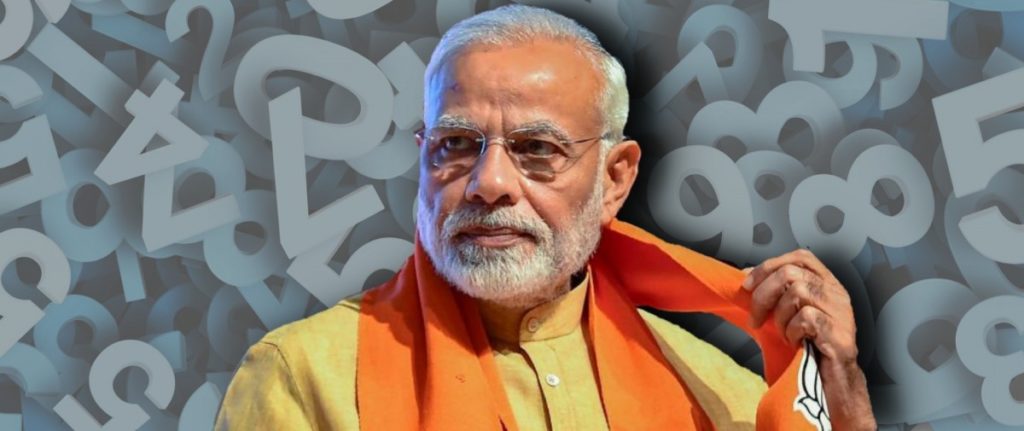Jahnavi Sen
The Narendra Modi government wants to know all about us—where we and our parents were born, where we live, what we do, details of our family members, our mobile numbers and so on. For a country of more than 133 crore people, that is a massive (and massively expensive) exercise. But the costs are worth it, the Centre has decided, and the National Population Register (NPR) must be updated next year.
The NPR, and the planned NRC it is linked to, are enormous data-gathering exercises, and will give the government access to personal information about everyone living in this country. This information can then potentially be used as the government (and therefor ruling party) pleases—whether to deny people citizenship, as many are afraid will happen, or to target voters in different areas based on demographic analysis. This, clearly, is the kind of data the Modi government likes.
But there is plenty of data the ruling regime does not like. In 2019, the Centre has time and again been accused of suppressing crucial all-India numbers that could help frame better policies—and give Indians a clearer picture of just how well the economy is (or isn’t) doing. When the government doesn’t like the data, it decides to simply pretend that those numbers don’t exist.
So while Modi and Shah focus on the NPR—data which many believe can be used for dangerous, majoritarian purposes but which their ministers claim will mainly be for implementing welfare schemes—here’s a look at all the other numbers the government should be paying attention to. Most of this data has been used and analysed by experts, economists and successive governments in the past to put their finger on why the economy looks the way it does—but the Modi government appears to believe this data just isn’t worth looking at.
Unemployment
The Modi government’s relationship with economic data started on a low in 2019.
The National Sample Survey Office conducted its latest periodic labour force survey between July 2017 and June 2018—a period considered crucial because it would reveal just what impact demonetisation had on India’s working population. Two members of the National Statistical Commission resigned when the Centre refused to make this data public, and yet the government didn’t blink.
In January 2019, Business Standard published a series of articles leaking the survey’s results. Unemployment was at a 45-year high, the NSSO had found, and youth unemployment was substantially higher than in previous years.
The Centre finally released that data only in May 2019—after the general elections were over and the Narendra Modi government had been re-elected. Even then, the government sought to play down the survey’s results by saying that the numbers were not strictly comparable, as the survey’s methodology had changed.
Even after the numbers were released, nobody in the government has addressed the issue or said what it intends to do about this rising number.
Consumer expenditure
The most recent controversy highlighting the Modi government’s proclivity to turning a blind eye to uncomfortable numbers is the National Statistical Office’s 2017–18 consumer expenditure data. Leaked again to the Business Standard, the data showed that consumer spending fell for the first time in 40 years. The decline was because of falling rural demand, the data said.
Instead of coming up with a plan to tackle this, the government rejected the survey’s findings due to “data quality issues”. According to Mint, after deciding to junk the survey, the Centre made the effort to try and find credible reasons for doing so. This was the first time in independent India that the government rejected a survey done by the National Statistical Office.
GDP growth
Another way to deal with numbers you don’t like, the Modi government has shown, is to change them altogether. That way, you can’t be accused of withholding numbers—but you also don’t have to deal with criticism that your government might have made things worse.
In late 2018, the government released new official GDP back series data, according to which GDP growth under the Manmohan Singh government was slower than earlier recorded. Several experts questioned how these news numbers were arrived at—even saying that they “turn the basic laws of macroeconomics on their head”.
Even with this manipulated data, the GDP growth has fallen to new lows in 2019. But instead of taking measures to address the falling growth rate, the government has attempted to wish it away by claiming that it is only a cyclical phenomenon.
Lynching
The National Crime Records Bureau published its 2016 ‘Crimes in India’ report an entire three years late—and still decided not to put out all the data it had collected. Numbers under certain sub-headings—mob lynching, murder by influential people and killings ordered by khap panchayat—were not published.
A little before the incomplete data was published, RSS chief Mohan Bhagwat had said that ‘lynchings’ are a Western construct and should not be used ‘defame’ India. His statement was widely criticised as trying to cover up crimes against minorities. Several leaders of the BJP have expressed explicit support for the accused in lynching cases, and government agencies have been accused of going soft on the investigations to ensure that nobody is punished.
Farmer suicides
Within the NCRB report mentioned above was a section on farmer suicides. Like the rest of the report, this data was three years late—and yet incomplete. For 2016, the NCRB has left out the section on causes of farmer suicides, which could provide important insights into why these suicides continue and what could be done to alleviate farmer distress.
Caste census
Data from the Socio-Economic Caste Census 2011—collected under the UPA government—has not been released even eight years later. This data is supposed to be used to frame welfare policies targeting marginalised groups.
In April 2018, Union minister Ramdas Athawale (an NDA ally) had said that the data should be released and he would be taking up the matter with Modi. Former chairman of the National Commission for Backward Classes, Justice Eshwaraiah, too faulted the Centre for sitting on this important data. However, the numbers have still not been released.
(Jahnavi Sen is Executive News Producer at TheWire.in.)




